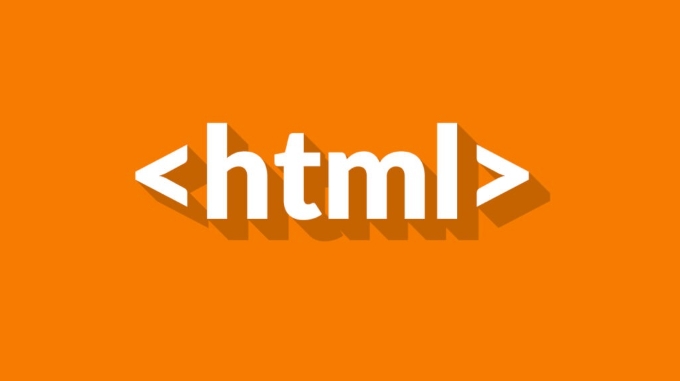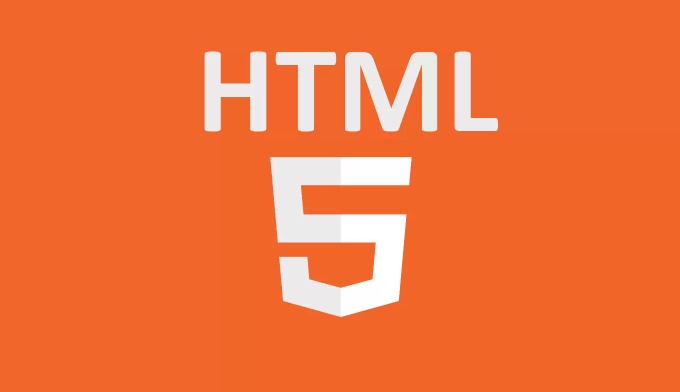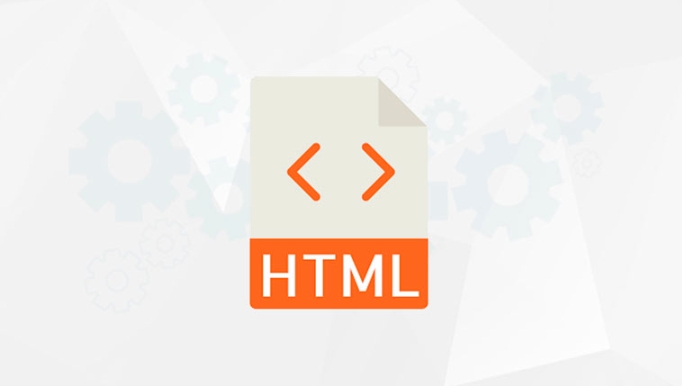The rp and rt elements in HTML are used to display ruby annotations for East Asian typography, providing pronunciation guides like furigana in Japanese or pinyin in Chinese. 1. The rt element contains the annotation text, while 2. the rp element wraps parentheses around the annotation for compatibility with older browsers. 3. Together, they ensure proper rendering across devices and better accessibility. 4. Styling can be done with CSS to adjust size, positioning, or visibility of the annotations. 5. Common mistakes include misplacing elements or neglecting fallback support. Using both elements properly enhances readability and semantic structure while maintaining backward compatibility.

When dealing with East Asian typography, especially in HTML, the rp and rt elements play a specific but important role. They’re used primarily to support ruby annotations — small text notes placed next to characters, commonly seen in Japanese, Chinese, and sometimes Korean typography.

The main use case is for furigana (in Japanese) or pinyin (in Chinese), where pronunciation guides are displayed alongside complex characters. These elements work together inside the ruby element to ensure that annotations appear correctly across different browsers and devices.
What Are rt and rp in HTML?
The rt element stands for ruby text, which contains the actual annotation — usually the pronunciation of a character or phrase. The rp element is a ruby parenthesis — it wraps punctuation like parentheses around the rt content, mainly for compatibility with older browsers that don't fully support ruby layout.

Here's a basic example:
<ruby> 漢 <rt>かん</rt> <rp>(</rp><rt>kann</rt><rp>)</rp> </ruby>
This structure allows modern browsers to display the ruby text properly while ensuring that even if ruby isn’t supported, the annotation still makes sense visually — often by showing “(kann)” next to the character.

Why You Should Use rp and rt Together
While you can technically use just rt, including rp improves accessibility and readability on systems that don't render ruby correctly.
- Better fallback experience: If a browser doesn't support ruby layout, the
rptags make sure the parentheses still show up, keeping the annotation readable. - Improved semantics: Using both elements clearly defines what part is the annotation (
rt) and how it should be enclosed (rp). - Consistent cross-browser behavior: Some older mobile browsers or minimal rendering engines rely on
rpto format ruby text correctly.
So, it’s best practice to include both rt and rp when marking up ruby annotations, even though they may not always be visible in modern setups.
How to Style Ruby Text
By default, browsers render rt smaller and above the base text. But you can customize this using CSS.
Some common styling tips:
- Use
font-sizeto adjust the size of ruby text - Use
ruby-alignandtext-combine-uprightfor more advanced positioning - Target
rtandrpdirectly to hide or modify their appearance
For example:
rt {
font-size: 0.7em;
color: #666;
}
rp {
display: none; /* Hide parentheses in modern browsers */
}Hiding rp is common because parentheses aren't needed when ruby is rendered properly. But remember: hiding them shouldn't affect screen readers or other assistive tools.
Common Mistakes to Avoid
It’s easy to misuse these elements, especially if you're not familiar with how ruby works in HTML.
Here are some common pitfalls:
- Forgetting to wrap parentheses in
rp - Placing
rtoutside therubytag - Overusing ruby for regular annotations (not just phonetic guides)
- Not testing how the content looks without ruby support
Also, avoid nesting multiple rt elements under one character unless necessary — it can confuse screen readers and layout engines.
Basically, the rp and rt elements help make ruby annotations more robust and readable. They’re not flashy, but they matter when you're working with East Asian text that needs pronunciation support. Just remember to pair them inside ruby, style them carefully, and test for compatibility.
The above is the detailed content of HTML `rp` and `rt` Elements for East Asian Typography. For more information, please follow other related articles on the PHP Chinese website!

Hot AI Tools

Undress AI Tool
Undress images for free

Undresser.AI Undress
AI-powered app for creating realistic nude photos

AI Clothes Remover
Online AI tool for removing clothes from photos.

Clothoff.io
AI clothes remover

Video Face Swap
Swap faces in any video effortlessly with our completely free AI face swap tool!

Hot Article

Hot Tools

Notepad++7.3.1
Easy-to-use and free code editor

SublimeText3 Chinese version
Chinese version, very easy to use

Zend Studio 13.0.1
Powerful PHP integrated development environment

Dreamweaver CS6
Visual web development tools

SublimeText3 Mac version
God-level code editing software (SublimeText3)
 Applying Semantic Structure with article, section, and aside in HTML
Jul 05, 2025 am 02:03 AM
Applying Semantic Structure with article, section, and aside in HTML
Jul 05, 2025 am 02:03 AM
The rational use of semantic tags in HTML can improve page structure clarity, accessibility and SEO effects. 1. Used for independent content blocks, such as blog posts or comments, it must be self-contained; 2. Used for classification related content, usually including titles, and is suitable for different modules of the page; 3. Used for auxiliary information related to the main content but not core, such as sidebar recommendations or author profiles. In actual development, labels should be combined and other, avoid excessive nesting, keep the structure simple, and verify the rationality of the structure through developer tools.
 Implementing Clickable Buttons Using the HTML button Element
Jul 07, 2025 am 02:31 AM
Implementing Clickable Buttons Using the HTML button Element
Jul 07, 2025 am 02:31 AM
To use HTML button elements to achieve clickable buttons, you must first master its basic usage and common precautions. 1. Create buttons with tags and define behaviors through type attributes (such as button, submit, reset), which is submitted by default; 2. Add interactive functions through JavaScript, which can be written inline or bind event listeners through ID to improve maintenance; 3. Use CSS to customize styles, including background color, border, rounded corners and hover/active status effects to enhance user experience; 4. Pay attention to common problems: make sure that the disabled attribute is not enabled, JS events are correctly bound, layout occlusion, and use the help of developer tools to troubleshoot exceptions. Master this
 Configuring Document Metadata Within the HTML head Element
Jul 09, 2025 am 02:30 AM
Configuring Document Metadata Within the HTML head Element
Jul 09, 2025 am 02:30 AM
Metadata in HTMLhead is crucial for SEO, social sharing, and browser behavior. 1. Set the page title and description, use and keep it concise and unique; 2. Add OpenGraph and Twitter card information to optimize social sharing effects, pay attention to the image size and use debugging tools to test; 3. Define the character set and viewport settings to ensure multi-language support is adapted to the mobile terminal; 4. Optional tags such as author copyright, robots control and canonical prevent duplicate content should also be configured reasonably.
 Best HTML tutorial for beginners in 2025
Jul 08, 2025 am 12:25 AM
Best HTML tutorial for beginners in 2025
Jul 08, 2025 am 12:25 AM
TolearnHTMLin2025,chooseatutorialthatbalanceshands-onpracticewithmodernstandardsandintegratesCSSandJavaScriptbasics.1.Prioritizehands-onlearningwithstep-by-stepprojectslikebuildingapersonalprofileorbloglayout.2.EnsureitcoversmodernHTMLelementssuchas,
 HTML for email templates tutorial
Jul 10, 2025 pm 02:01 PM
HTML for email templates tutorial
Jul 10, 2025 pm 02:01 PM
How to make HTML mail templates with good compatibility? First, you need to build a structure with tables to avoid using div flex or grid layout; secondly, all styles must be inlined and cannot rely on external CSS; then the picture should be added with alt description and use a public URL, and the buttons should be simulated with a table or td with background color; finally, you must test and adjust the details on multiple clients.
 How to associate captions with images or media using the html figure and figcaption elements?
Jul 07, 2025 am 02:30 AM
How to associate captions with images or media using the html figure and figcaption elements?
Jul 07, 2025 am 02:30 AM
Using HTML sums allows for intuitive and semantic clarity to add caption text to images or media. 1. Used to wrap independent media content, such as pictures, videos or code blocks; 2. It is placed as its explanatory text, and can be located above or below the media; 3. They not only improve the clarity of the page structure, but also enhance accessibility and SEO effect; 4. When using it, you should pay attention to avoid abuse, and apply to content that needs to be emphasized and accompanied by description, rather than ordinary decorative pictures; 5. The alt attribute that cannot be ignored, which is different from figcaption; 6. The figcaption is flexible and can be placed at the top or bottom of the figure as needed. Using these two tags correctly helps to build semantic and easy to understand web content.
 What are the most commonly used global attributes in html?
Jul 10, 2025 am 10:58 AM
What are the most commonly used global attributes in html?
Jul 10, 2025 am 10:58 AM
class, id, style, data-, and title are the most commonly used global attributes in HTML. class is used to specify one or more class names to facilitate style setting and JavaScript operations; id provides unique identifiers for elements, suitable for anchor jumps and JavaScript control; style allows for inline styles to be added, suitable for temporary debugging but not recommended for large-scale use; data-properties are used to store custom data, which is convenient for front-end and back-end interaction; title is used to add mouseover prompts, but its style and behavior are limited by the browser. Reasonable selection of these attributes can improve development efficiency and user experience.
 How to handle forms submission in HTML without a server?
Jul 09, 2025 am 01:14 AM
How to handle forms submission in HTML without a server?
Jul 09, 2025 am 01:14 AM
When there is no backend server, HTML form submission can still be processed through front-end technology or third-party services. Specific methods include: 1. Use JavaScript to intercept form submissions to achieve input verification and user feedback, but the data will not be persisted; 2. Use third-party serverless form services such as Formspree to collect data and provide email notification and redirection functions; 3. Use localStorage to store temporary client data, which is suitable for saving user preferences or managing single-page application status, but is not suitable for long-term storage of sensitive information.






